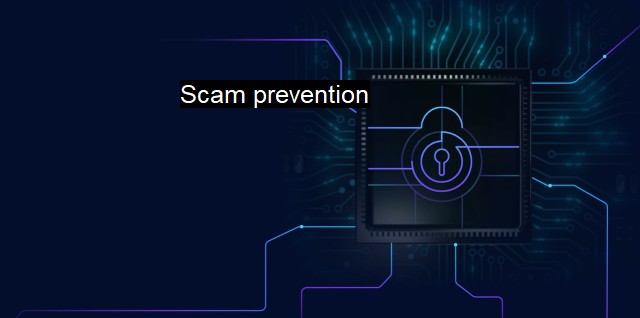What is Scam prevention?
Protecting Your Digital World: Exploring the Importance of Scam Prevention and Antivirus Software in Today's Cybersecurity Landscape.
Scam prevention refers to an array of tactics, strategies, software, and methodologies used to protect internet users from falling victim to scams, hoax, fraud, or any other illegitimate activities conducted over the internet or via other digital communication methods. These scams are often aimed at stealing sensitive user information, illegally tapping into their financial resources, breaching their privacy, or infecting their systems with damaging software, often called malware.Cybersecurity, as a field, encompasses all bodies of technologies, processes, and practices geared towards protecting internet-connected systems, including hardware, software, and data, from digital attacks. When cybersecurity is taken out of the equation, what you have left are systems ripe for exploitation by scrupulous elements who ceaselessly hatch numerous cleverly executed scams to make unsuspecting victims part with their valuable information and money.
Antivirus software, on the other hand, is a computer program used to prevent, detect, and eliminate malicious software like viruses, trojans, ransomware, keyloggers, phishing, spam, and others. Manufacturers of antivirus software continuously update and extend their products to keep up with newly emerging forms of malwares, and contain the capacity to detect unfamiliar threats by identifying patterns and behaviours that are considered malicious.
Scam prevention includes educating individuals on potential threats, cyber hygiene, spotting and reporting suspicious activities, maintaining up-to-date antivirus software, and implementing strong measures like two-factor authentication, complex passwords, and firewalls. As scams have moved from simple email frauds to elaborate phishing, ransomware, and impersonation scams, methods of scam prevention have also evolved substantially over the years.
Educating individuals about potential threats and their outcomes forms a paramount form of defense. It often involves training and awareness program where individuals get insights into the mode of operation of such scams, how they could make victims out of individuals or compromise organization's system all for the purposes of stealing valuable information or disrupting their operation. For instance, sharing the information that legitimate businesses seldom ask customers to act immediately cultivates a sense of scrutiny.
Cyber hygiene involves a set of practices and steps internet users can take to maintain system health and improve online security. These can be likened to personal hygiene practices, as their primary aim is to ensure a clean, secure, and reliable operating environment. Cyber hygiene practices include things like regular software updates, data back-ups, use of encrypted connections, minimal sharing of personal information, and so on.
Implementing strong measures like complex passwords, firewalls, and two-factor authentication also contribute to scamming prevention. an organization can enforce a regular password–changing policy with requirements, use biometric log-ins, or identity management software to alleviate the risks of password breaches. A firewall is also essential to hinder unauthorized access to a protected network, scanning every packet of information to ensure it doesn’t contain dangerous requests.
Scam prevention, therefore, requires awareness, appropriate tool implementation, continuous learning, and responsive actions. With the arms race between cybersecurity agencies and cybercriminals, the tactics and technologies in play keep evolving. the advent of smarter security protocols and technologies, ever-improving scam identification & neutralization techniques and increasing awareness, anticipate a safer cyberspace in the future. As we embrace the digital age, personal and organizational preparedness in scam prevention should be considered as an investment, and not an option. It could be the worthy shield that defends one's fortune, reputation, as well as mental peace.

Scam prevention FAQs
What is scam prevention?
Scam prevention refers to the methods and strategies used to protect individuals and organizations from falling victim to fraudulent activities. In cybersecurity, this can include using antivirus software, implementing strong passwords, and avoiding suspicious emails and websites.Why is scam prevention important in cybersecurity?
Scam prevention is critical in cybersecurity because scammers often use deceptive tactics to gain access to sensitive information or cause damage to computer systems. By implementing effective prevention measures, individuals and organizations can reduce the risk of falling victim to these scams and protect their personal and business data.What are some common types of scams?
Some common types of scams include phishing emails, fake antivirus software, tech support scams, and fake websites. Phishing emails typically try to trick recipients into providing personal or financial information, while fake antivirus software often infects a computer with malware. Tech support scams involve fraudulent tech support calls or pop-up ads that try to convince users to pay for unnecessary repairs or services. Fake websites can mimic legitimate sites and trick users into providing sensitive information.What can individuals and organizations do to prevent scams?
Individuals and organizations can take several steps to prevent scams, including using antivirus software, regularly updating software and operating systems, being cautious about emails from unknown senders, and avoiding suspicious websites or services. It is also important to use strong passwords and enable multi-factor authentication whenever possible. Additionally, it can be helpful to stay informed about common scams and to report any suspicious activity to the appropriate authorities.| | A | | | B | | | C | | | D | | | E | | | F | | | G | | | H | | | I | | | J | | | K | | | L | | | M | |
| | N | | | O | | | P | | | Q | | | R | | | S | | | T | | | U | | | V | | | W | | | X | | | Y | | | Z | |
| | 1 | | | 2 | | | 3 | | | 4 | | | 7 | | | 8 | | |||||||